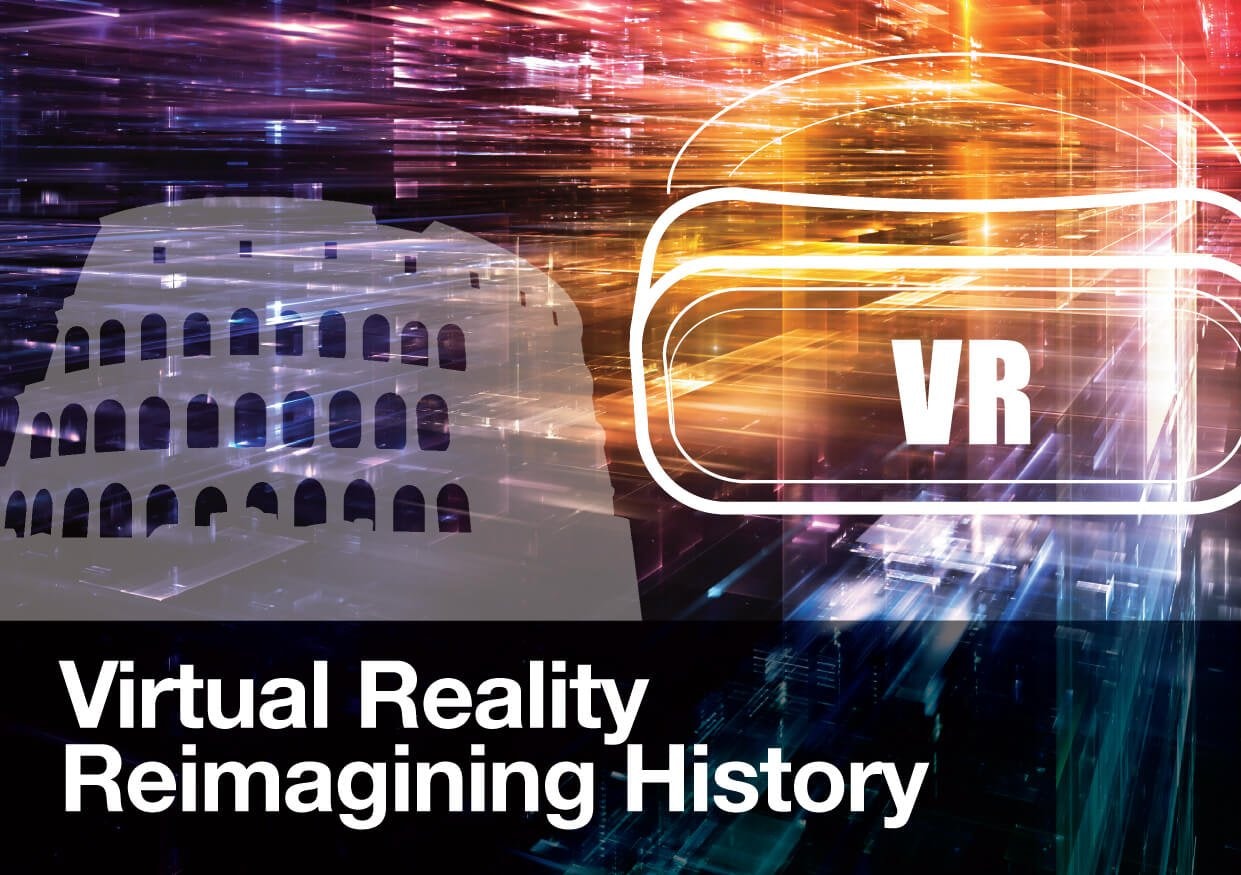Virtual Reality Reimagining History
As virtual reality technology continues to progress, both public and private sectors continue to find interesting and unique applications for it.
Amongst many other industries, VR development is becoming a particularly prominent tool across entertainment, educational simulation, and occupational training. Now, VR is being adopted by the tourism and heritage sector, altering how visitors experience historic spaces and artefacts.
VR has existed conceptually and in rudimental form since the late 19th century, through Charles Wheatstone’s stereoscopic images and photographs. The first head mounted display was invented by Morton Heilig in 1960 and SEGA produced a VR headset for gaming in 1993. These are the predecessors to today’s leading VR headsets; the HTC Vive and the Oculus Rift. Such rapid progression in 360-degree high resolution photography, the volumes of generated data, as well as advances in software, has enabled realistic mapping of objects and landscapes into virtual reality.
The potential of this technology as Dominic Deane, partner of Chronicles VR with Rachel Derbyshire, states, it is to “put the object [artefact] in its original context” which really helps museum visitors to “make a connection.” Chronicles VR use Oculus Rift 3D headsets, owned by Facebook, to create this experience. Viewing a single artefact through a 3D headset may not seem that revolutionary but it completely reframes the experience of visiting museums; delivering a much more immersive and sensory experience than simply reading an information label. Digitising the information additionally allows new opportunities for museums where space is a premium. It offers greater accessibility and could further bridge the gap between archival work and visitor access to this information.
This digitisation of artefacts is already being applied on a larger scale, with entire heritage and archaeological sites being digitised, gradually becoming accessible through VR. BBC Two television series “Ancient Invisible Cities” recently showcased how laser-scanning technology and virtual reality are offering brand new insights into ancient civilisations. Drones are used to take photogrammetric images of sites from which detailed 3D models are used to recreate spaces or artefacts. The series covered sites across Cairo, Istanbul and Athens, which remain mostly inaccessible to the public.
Google is currently collaborating with non-profit CyArk to preserve similarly inaccessible ancient monuments or sites in the Open Heritage project, which already has 26 heritage sites across 18 countries. Perhaps Google Maps will one day evolve to not only be able to show you the globe geographically, but also a holistic view of historic sites wherever the data is available.
Simply put, VR is playing a key role in both the digitising past architecture, as well as shaping future architecture (as mentioned in Dashboard’s previous article on BIM). It will completely change the way we experience artefacts and historical sites giving visitors a more immersive and realistic understanding of objects and places which have always fascinated us.
